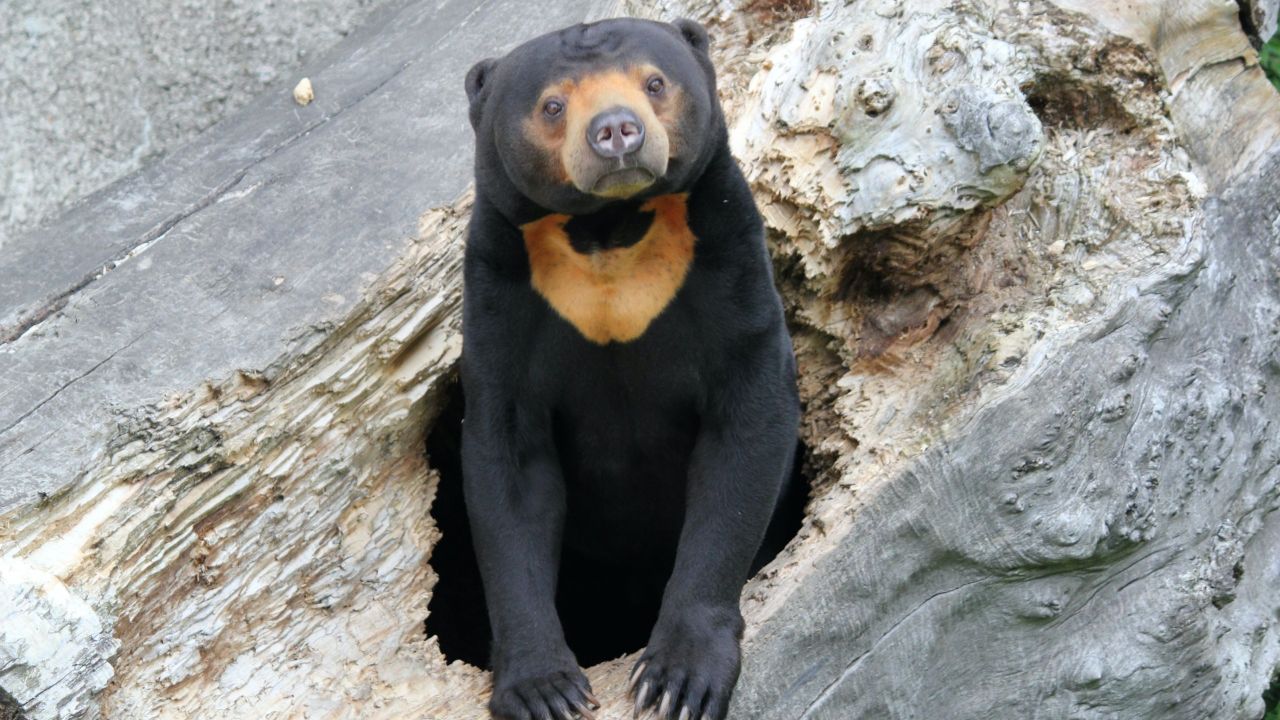
Sun bear (Helarctos malayanus): small bears found in the tropical forests of Southeast Asia.
AKA: Dog-face bear, Malay bear, and honey bear
Kingdom: | Animalia
Phylum: | Chordata
Class: | Mammalia
Order: | Carnivora
Family: | Ursidae
Genus: | Helarctos
Species: | H. malayanus
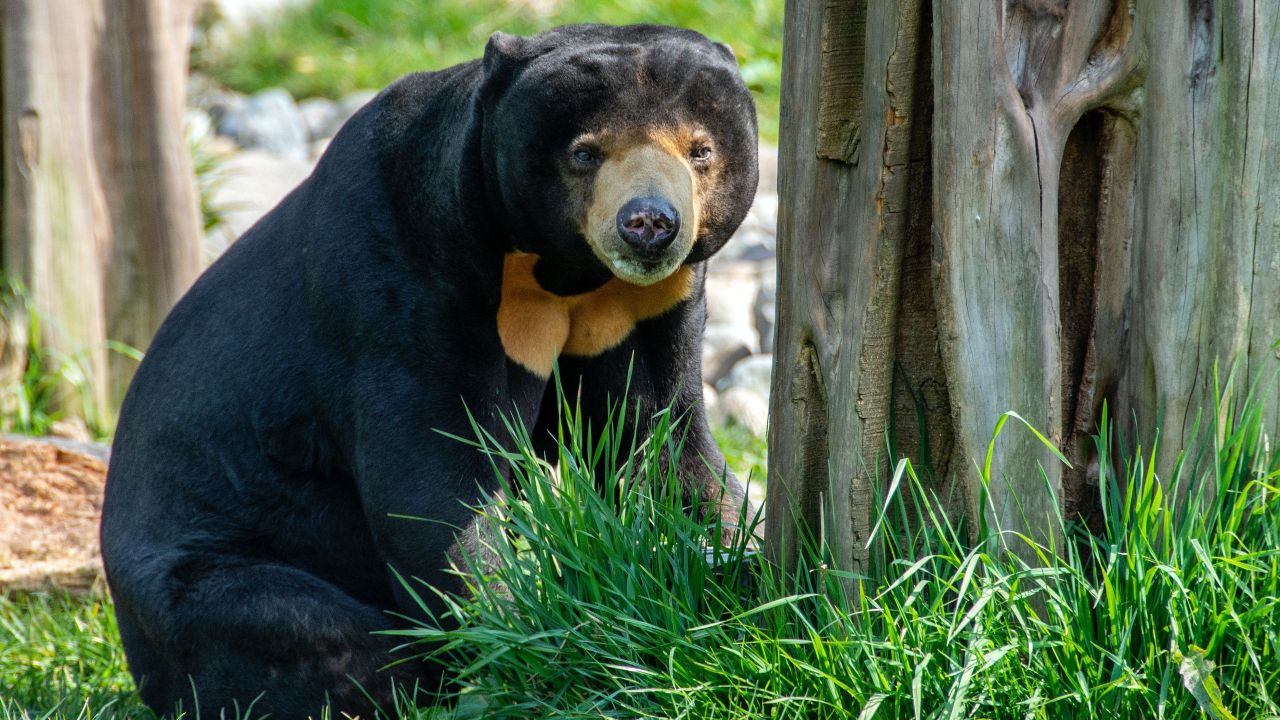
Size and Weight:
Sun bears are the smallest bear species, measuring 4 to 5 feet long on their hind legs and weighing 60 to 150 pounds. This is only about half the size of an American black bear.
Appearance:
Sun bears are named for the golden patches of fur on their chests, which are said to resemble a rising sun. Each bear’s crest is as unique as human fingerprints. They are stockily built, with large paws, strongly curved claws, small rounded ears and a short snout. Their fur is generally jet-black but can vary from grey to red. Its unique morphology of inward-turned front feet, flattened chest, and powerful forelimbs with large claws suggest adaptations for climbing.
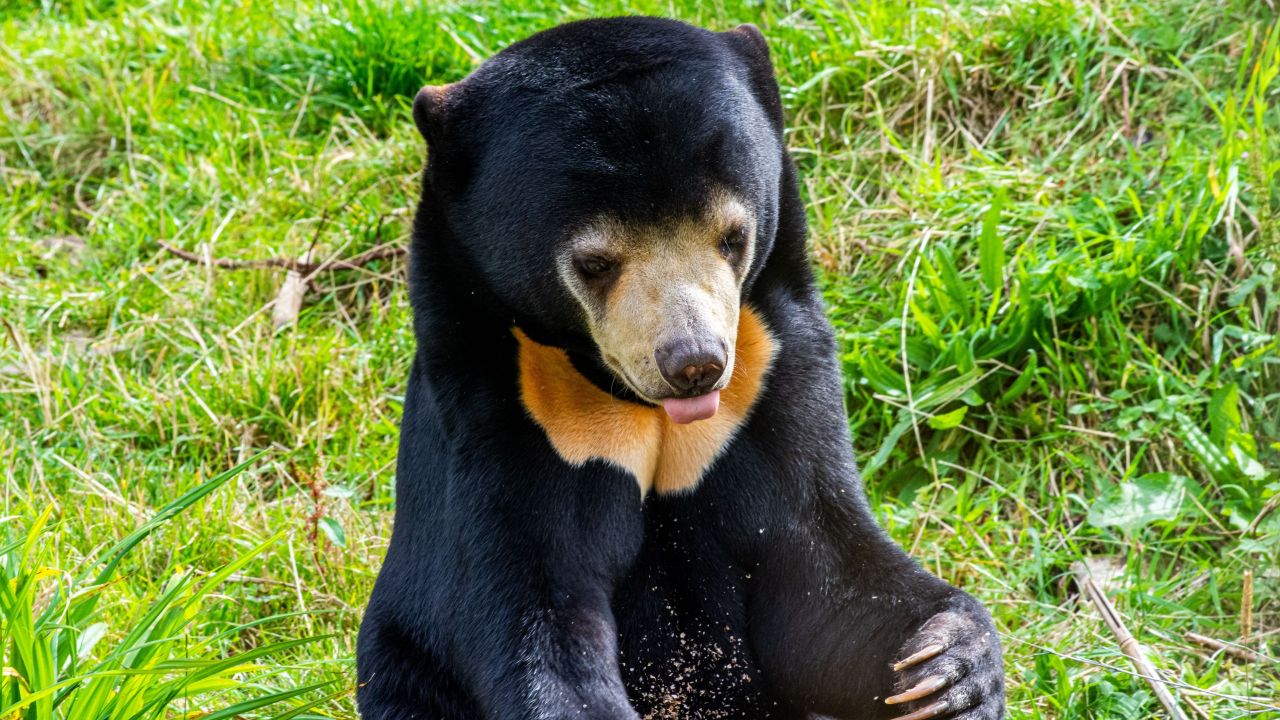
Diet:
These bears are omnivores. Their diet includes insects, leaves, lizards and berries. Honey is their favorite snack. To get the treat, they use their sharp claws to open beehives. Then they use their extra long tongues to extract the honey inside, often gobbling up bees with the sticky sweet.
Habitat:
Their habitat includes wooded areas and tropical forests. As the most arboreal bear, the sun bear is an excellent climber and creates its nest in tree branches.
Geography:
Sun bears can be found in Southeast Asia.
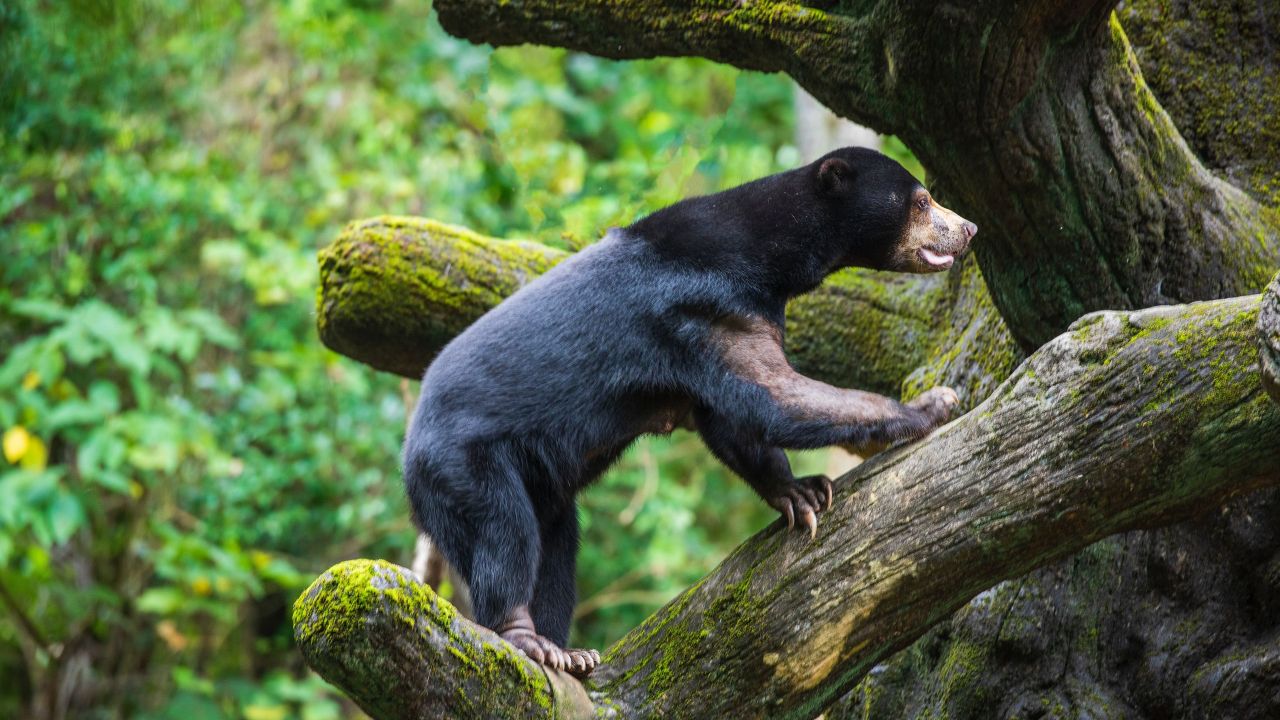
Breeding:
Sun bears don’t have a particular breeding season. Adult females are the only type of bear to cycle several times each year. They create their nests in leafy vegetation on the ground, in tree branches, or in hollow logs. After a gestation period of 95 to 100 days, the female gives birth to 1 to 2 cubs. Cubs are born hairless and helpless, unable to hear or smell. They depend on their mother for food, warmth, and protection.
By 4 to 5 months of age, cubs are able to run and play. And by 18 months, they are weaned off their mother’s milk. The cubs stay with their mother for about two years and reach sexual maturity when they are 3 to 5 years old.
Social Structure:
Sun bears are typically solitary, except for a mother and its cubs or during mating. These bears are usually active during the day. It is arboreal and an exceptional climber. It sunbathes or sleeps in trees 7 feet to 23 feet above the ground. They are also excellent swimmers.
These petite bears vocalize using a variety of different sounds. Adult bears use a clucking noise, similar to a hen, to signal friendly intent. Aggressive bears bark, growl and roar. Cubs hum while nursing and squawk or cry when in need of their mother’s attention.
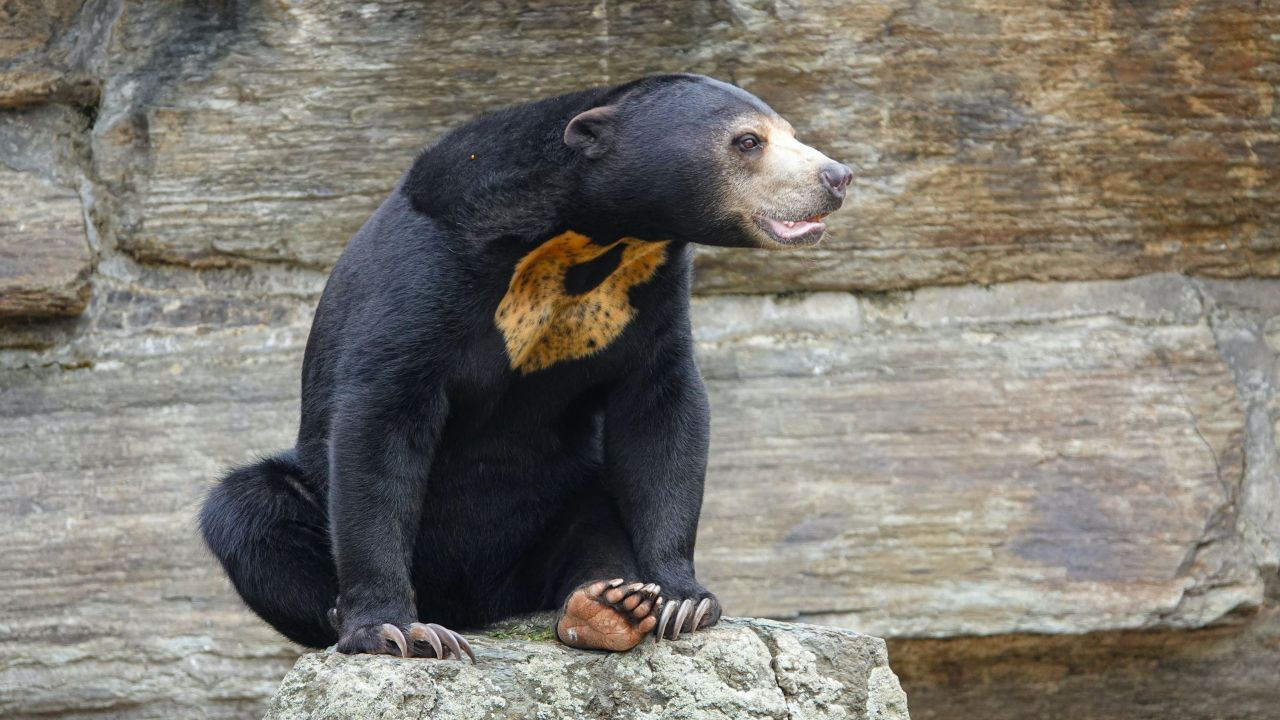
Lifespan:
In the wild, sun bears live up to 25 years.
Threats:
Sun bears are shy and elusive, making them difficult to find and study. While current data has them listed as endangered, their population size is believed to be rapidly declining. The largest threats include habitat loss, poaching for their meat and their use in medicine, and the pet trade. Their appetite for oil palm and other commercial crops has led to conflict between them and humans.
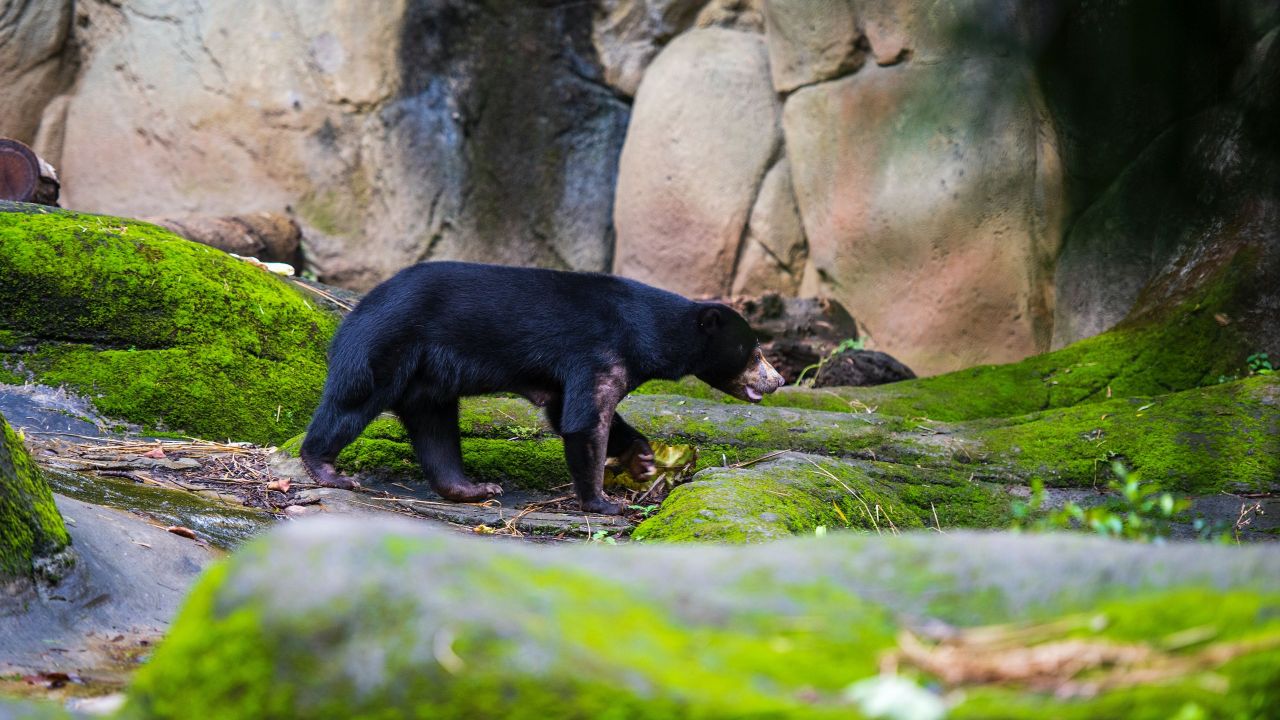
Conservation Status:
As of 2016, sun bears are classified as “Vulnerable” by The IUCN Red List of Threatened Species.
Conservation Efforts:
With the exception of Malaysia and Cambodia, laws prohibit the hunting of sun bears throughout their whole range. However, these laws are not strictly enforced. Numerous conservation groups, including The Bornean Sun Bear Conservation Centre (BSBCC), aim to protect these bears. BSBCC aims to provide care and rehabilitation to rescued sun bears and to increase awareness of sun bears internationally.
Sources: San Diego Zoo Wildlife Alliance.
